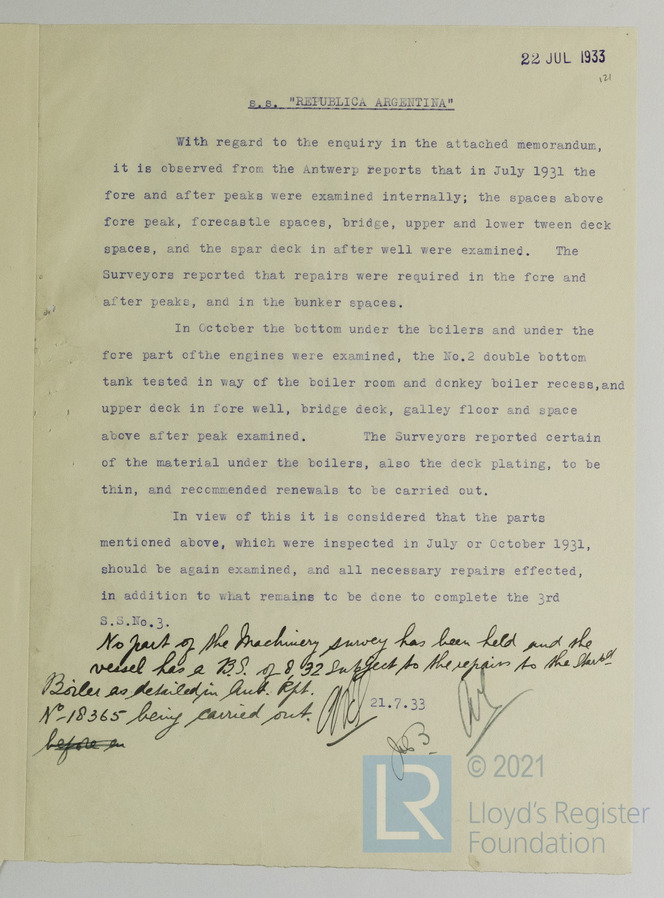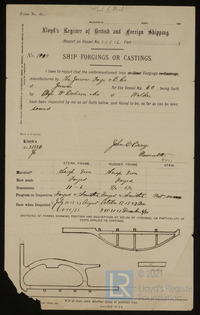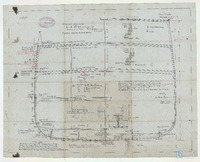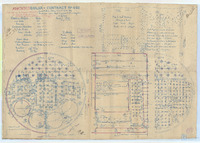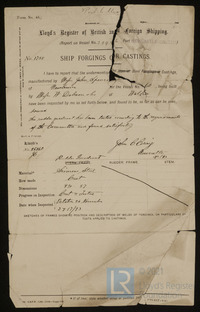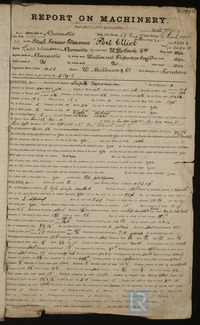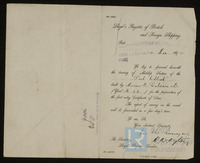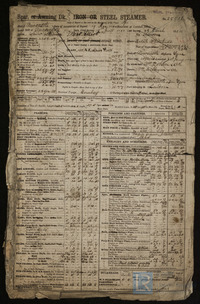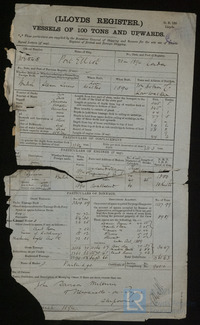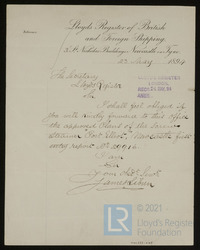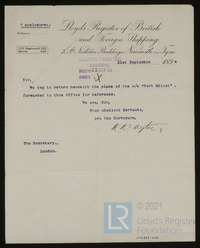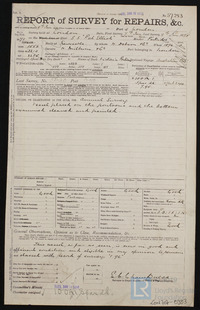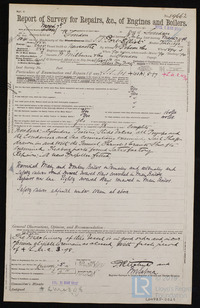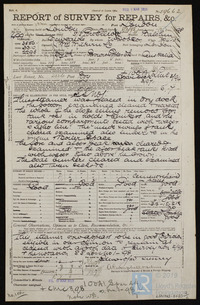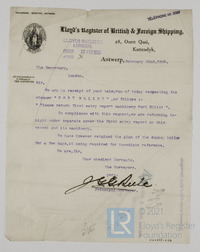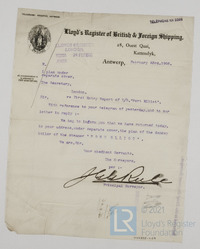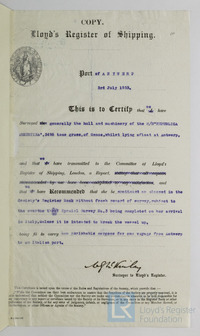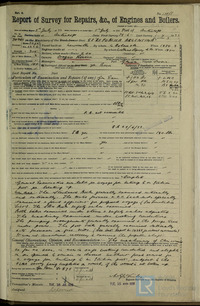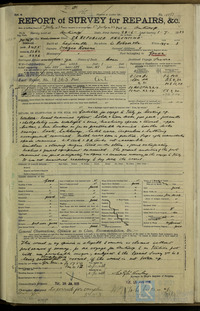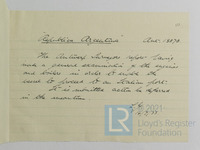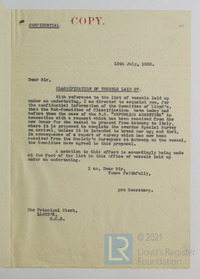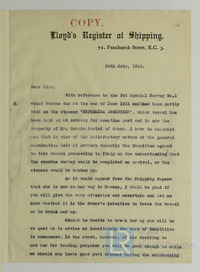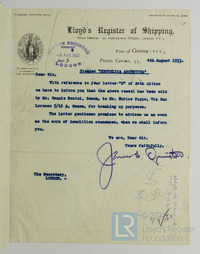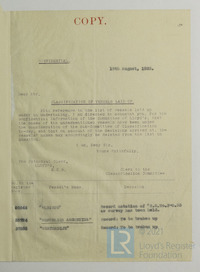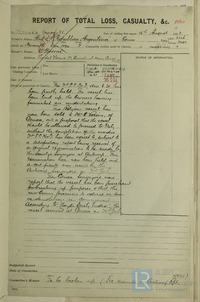- Related documents Related
- Full details Details
- Report document? Report?
Use the data export button to extract customised data sets from the Ship Plan and Survey Report Collection. Available in TSV and CSV formats.
Date recorded as the time of writing.
21/07/1933
The year in which a vessel’s construction is completed.
1894
The individual and/or organisation listed as having been responsible for constructing the vessel. This can/may be the same as the owner and/or manager.
William Dobson & Co
The name of the yard where the vessel was built.
Walker
Official administrative title (often printed) of a record used by Lloyd’s Register or external organisations.
Memo
Records that constitute Lloyd’s Register’s first official encounters with a specific vessel, e.g. a survey report.
N
A vessel’s means of propulsion.
Steam
Confirmation as to whether the vessel was equipped with refrigeration machinery to aid in the transport of frozen or chilled cargo/goods.
No
Does the vessel possess an auxiliary power source?
No
Is electric lighting fitted to the vessel?
No
Physical extent of a record.
1
Name of ship as recorded on the record
Port Elliot
The process of transferring a vessel to water, but not necessarily her completion.
__/03/1894
Unique identifier for a given ship, it is assigned by a builder.
60
The port or place in which the vessel’s construction took place, at the time of writing.
Newcastle upon Tyne
Other/additional record(s) specifically mentioned, referenced or associated to another record.
Antwerp 18365
Broad categories and subdivisions of vessels related to their purpose or function.
undefined
Is the steamer assisted by sail?
No
Is machinery fitted at the aft of the vessel?
No
Generally a smaller additional auxiliary boiler (often used while the vessel is at port).
No
Name of the Proving House responsible for the public testing and certification of a vessel’s anchors and/or chain cables.
No
Pertinent, useful or interesting recorded content.
Gives particular mention to the fore and after peaks, spaces above the fore peak, forecastle spaces, bridge, upper and lower tween deck spaces, the bottom under the boilers and fore part of the engines, No2 double bottom tank, bridge deck, galley floor and deck plating
Report an issue with this document
Have you noticed missing or incorrect data or images for this document?
Please let us know and we will rectify the issue as soon as possible.

